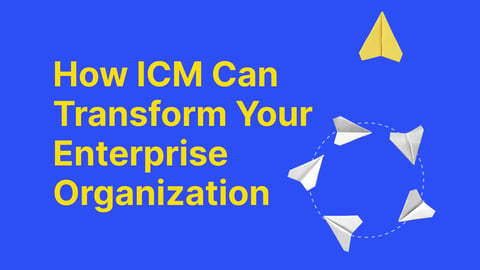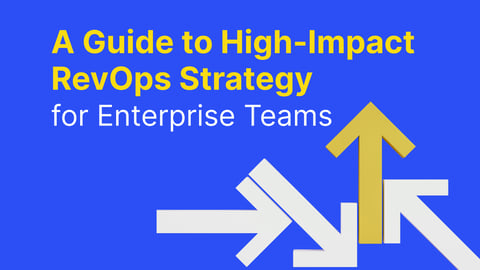Data management and data analysis are crucial to success in sales performance management. They help sales managers find the business intelligence they need to make the right decisions about issues like quota setting, designing sales territories, and creating commission models that get the results they need to be successful. This data comes from multiple sources - your website, finance systems, e-commerce systems, or third party data sets. The possibilities are endless.
So, what's the best way to capture and consolidate all this data so you can use it to make the right calls when needed? Let's explore the exciting opportunities Extract Load Transform (ELT) capabilities provide in helping non-technical users access the data they need to deliver better results for the business.
What Is ELT (Extract, Load, Transform)?
In essence, ELT is a way of moving raw data from multiple data sources to a target data store (sometimes referred to as a data lake) so that the relevant data can be analyzed to provide actionable business intelligence. The challenge for anyone is that the format of data, whether lookup tables, log files, structured data, or unstructured data, for example, will be different for each data source.
The data format for the target system will also be different; somehow, at some point in the data pipeline, there needs to be a transformation process that converts the data from the source systems into the correct format for the target data warehouse. As part of this process, there may also need to be some form of data cleansing process to ensure that the correct data is in the right place, in the proper format, and to help ensure that meaningful and valuable analysis is delivered.
ELT vs. ETL: What's the Difference?
The idea of moving data between systems is as old as computing, but how it works is constantly changing as new technologies replace the old. The traditional approach utilized 'Export Transform Load' (ETL) capabilities to move data. This involved moving the raw data from multiple sources into an interim processing server, sometimes known as a swing server or a staging server, ready to be cleansed, consolidated, formatted, and then sent to the new target system. While proven and robust, ETL capabilities have their shortcomings.
Firstly, you needed a staging server, which means you needed help from your IT team to set it up and deliver the project. You’ll likely be placed at the end of a very long project queue, waiting 3-6 months, if not longer, before you can commission your mission-critical sales performance management project. ELT-based processes are different. They use the power and convenience of cloud services to eliminate the need for the interim processing server and instead move the raw data you need from multiple sources. They utilize ETL tools to directly transfer the data into the new target database. The critical data transformations core to the data pipeline occur in the data warehouse, reducing the need for extra hardware. The aim is to provide ELT capabilities that make it easy for people with limited technical experience to move complex data sets around the organization.
How ELT Works
Let's look at how ELT might work in a sales environment where you have a sales and marketing management team that wants to enhance how they manage the sales team's performance.
Optimizing sales performance management means aligning market opportunity and need with how customers buy their products and services. Understanding this process will help sales and marketing managers design the right go-to-market plans, suitable sales territory models, ideal quota models, and commission and bonus models. How customers buy - whether through digital engagement, website visits, direct engagement with your sales team, or via your channel partners, for example – can be found in various sources. These include your CRM platform, finance systems, and e-commerce platform, as well as third-party data sources that feature industry-specific metrics. All these source data will be able to export their data, whether as a spreadsheet, a CSV file, a text file, or a SQL extract. Each will use different formats, definitions, and terms that need to be captured - and transformed - during the data integration process. With all the relevant data stores identified, the next step is to utilize a dedicated extract load transform toolset that allows you to set up the data flows so that even without access to data engineers, users can see the individual steps in the ELT process, from the data store to data warehouse, including the critical data transformation [link to data transformation blog - to insert week following] methods.
The Benefits of ELT
ELT capabilities enable skilled line-of-business users to capture, consolidate, and manage large and complex data sets without involving very scarce IT resources. The quality of ELT tools available means that managing the complexity - and the risks - of a time-consuming and complex data transformation operation is significantly reduced. It helps put sales managers and sales operations teams in control of their business and data rather than being at the mercy of it.
ELT Software: How to Find the Right One
While one might consider that all data is 'equal,' the ELT tools you could use aren’t. The principles of ELT are well known, so there are plenty of tools you could use. This works for 'power' data users, but for those with other day-to-day responsibilities, like managing a large sales team, it might be worth considering ELT tools designed to address their unique needs and requirements. The ideal would be for ELT tools to help simplify the process by 'embedding' expertise to remove much of the heavy lifting needed to successfully execute a data management and analytics project. For example, wouldn’t it be useful if you could use an ELT tool that comes already integrated into the most popular sales, marketing, and finance platforms? Equally, wouldn't it be ideal if there were ready-to-use templates of common use case examples that helped set you up for success when all the data finally landed in the data warehouse? Managing data is complex. Your ideal tool's job is to make it much easier so that any user can get involved in the critical data integration and transformation processes that businesses need to master to develop their company further.
Learn more about data integrations and solutions to centralize data and business processes.




